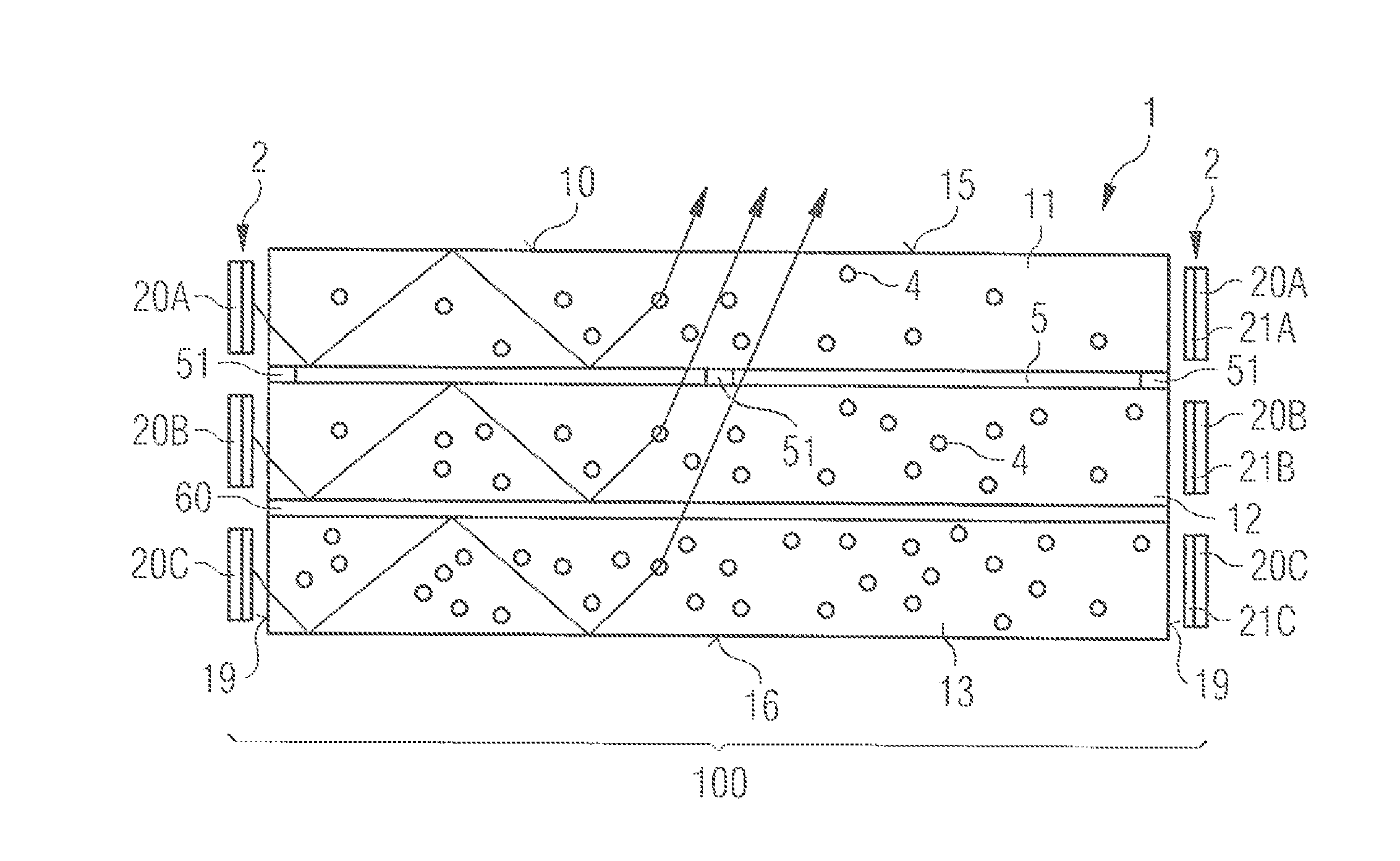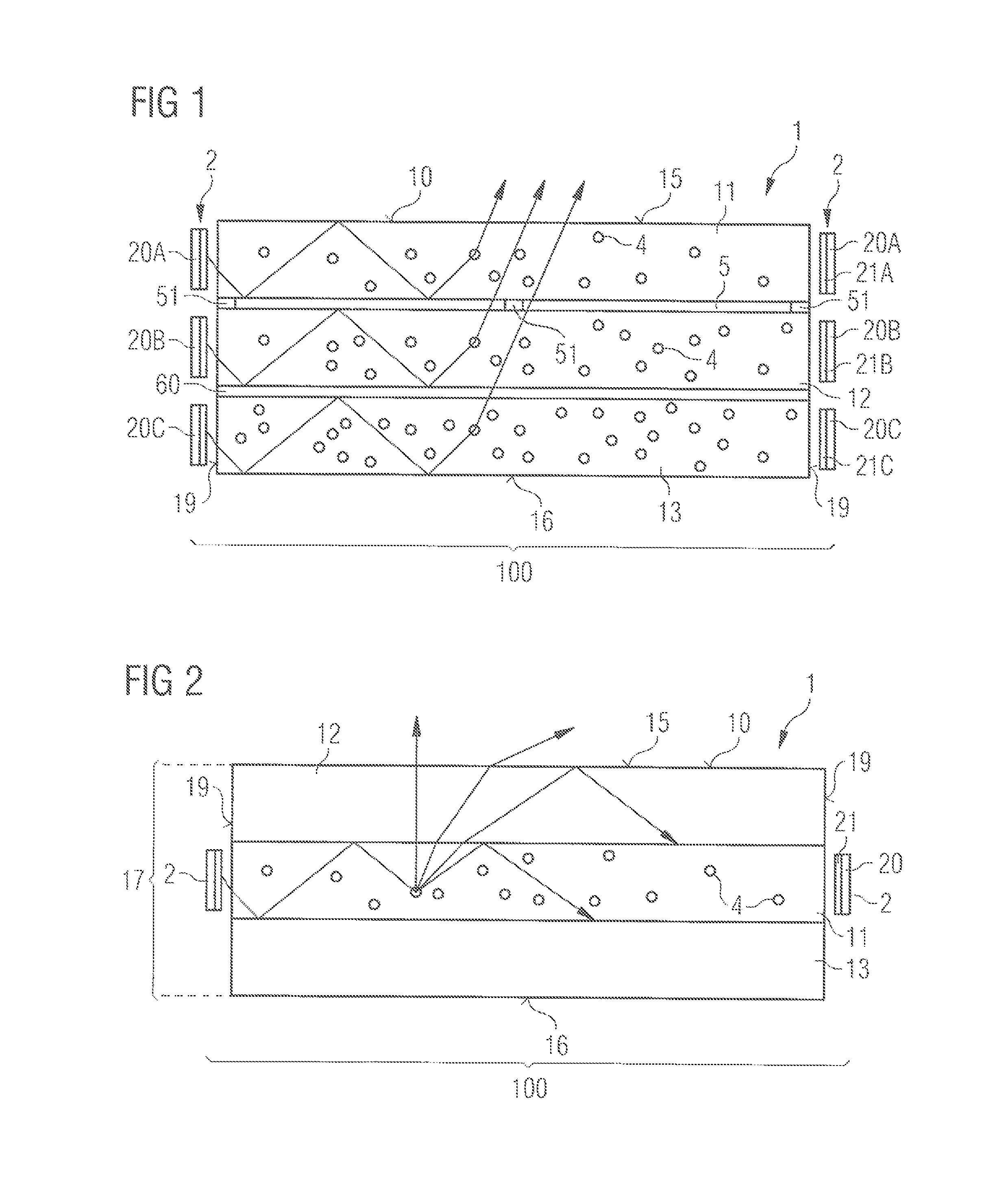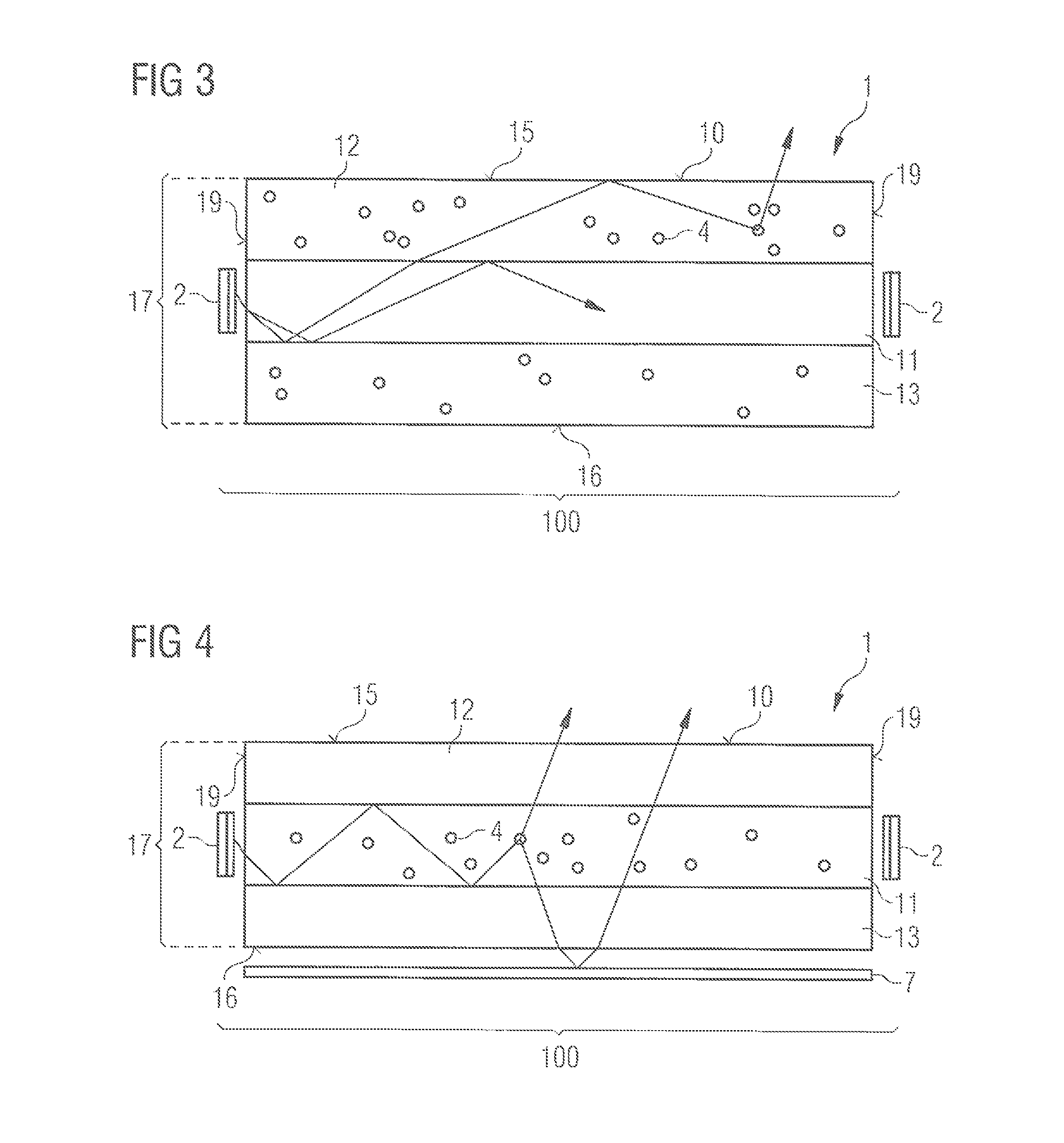Surface light guide and planar emitter
a technology of surface light guide and planar emitter, which is applied in the direction of planar/plate-like light guide, lighting and heating apparatus, instruments, etc., and can solve problems such as the distribution of ligh
- Summary
- Abstract
- Description
- Claims
- Application Information
AI Technical Summary
Benefits of technology
Problems solved by technology
Method used
Image
Examples
Embodiment Construction
[0060]FIG. 1 shows a planar emitter 100 comprising a surface light guide 1. The surface light guide comprises a first layer 11, a second layer 12 and a further layer 13. The layers 11, 12, 13 are formed between a first interface 15 and a second interface 16. In a vertical direction, that is to say perpendicular to a main extension plane of the surface light guide 1, the interfaces delimit the region of the surface light guide in which the coupled-in radiation propagates, in particular on account of total internal reflection. Scattering locations 4 are formed in the layers 11, 12, 13, and are provided for scattering radiation coupled into the surface light guide laterally, that is to say along a main extension direction of the surface light guide. The proportion of radiation which emerges from a radiation exit area 10 is increased by means of the scattering locations 4.
[0061]The layers 11, 12, 13 are decoupled from one another with regard to the light guidance at least in regions. Th...
PUM
 Login to View More
Login to View More Abstract
Description
Claims
Application Information
 Login to View More
Login to View More - R&D
- Intellectual Property
- Life Sciences
- Materials
- Tech Scout
- Unparalleled Data Quality
- Higher Quality Content
- 60% Fewer Hallucinations
Browse by: Latest US Patents, China's latest patents, Technical Efficacy Thesaurus, Application Domain, Technology Topic, Popular Technical Reports.
© 2025 PatSnap. All rights reserved.Legal|Privacy policy|Modern Slavery Act Transparency Statement|Sitemap|About US| Contact US: help@patsnap.com



